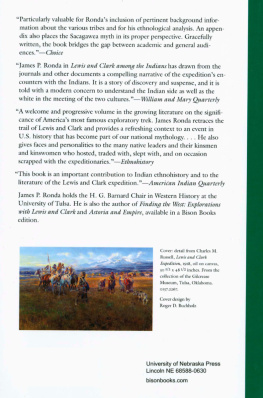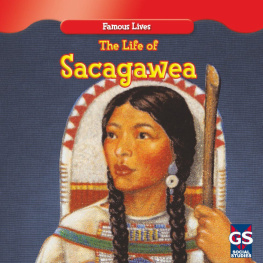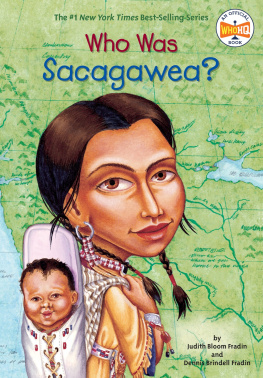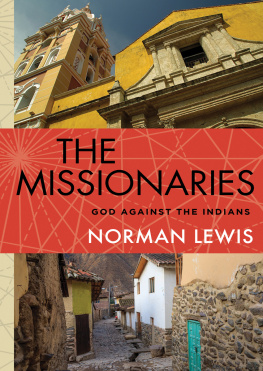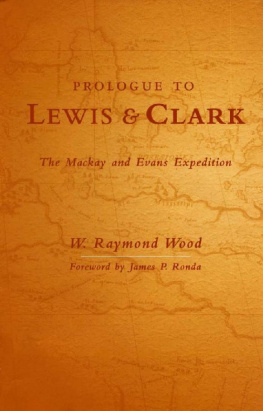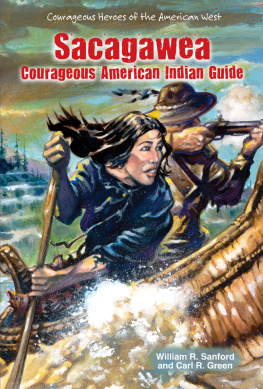James P. Ronda - Lewis and Clark among the Indians
Here you can read online James P. Ronda - Lewis and Clark among the Indians full text of the book (entire story) in english for free. Download pdf and epub, get meaning, cover and reviews about this ebook. year: 2014, publisher: Bison Books, genre: Politics. Description of the work, (preface) as well as reviews are available. Best literature library LitArk.com created for fans of good reading and offers a wide selection of genres:
Romance novel
Science fiction
Adventure
Detective
Science
History
Home and family
Prose
Art
Politics
Computer
Non-fiction
Religion
Business
Children
Humor
Choose a favorite category and find really read worthwhile books. Enjoy immersion in the world of imagination, feel the emotions of the characters or learn something new for yourself, make an fascinating discovery.
- Book:Lewis and Clark among the Indians
- Author:
- Publisher:Bison Books
- Genre:
- Year:2014
- Rating:5 / 5
- Favourites:Add to favourites
- Your mark:
- 100
- 1
- 2
- 3
- 4
- 5
Lewis and Clark among the Indians: summary, description and annotation
We offer to read an annotation, description, summary or preface (depends on what the author of the book "Lewis and Clark among the Indians" wrote himself). If you haven't found the necessary information about the book — write in the comments, we will try to find it.
Particularly valuable for Rondas inclusion of pertinent background information about the various tribes and for his ethnological analysis. An appendix also places the Sacagawea myth in its proper perspective. Gracefully written, the book bridges the gap between academic and general audiences.Choice
Lewis and Clark among the Indians — read online for free the complete book (whole text) full work
Below is the text of the book, divided by pages. System saving the place of the last page read, allows you to conveniently read the book "Lewis and Clark among the Indians" online for free, without having to search again every time where you left off. Put a bookmark, and you can go to the page where you finished reading at any time.
Font size:
Interval:
Bookmark:


1984 by the University of Nebraska Press
Introduction to the bicentennial edition 2002 by the University of Nebraska Press
All rights reserved
First Bison Books printing: 1998
Ronda, James P., 1943
Lewis and Clark among the Indians / James P. Ronda; with a new introduction by the author.
p. cm.
Originally published: 1984.
Includes bibliographical references (p.) and index.
ISBN-13: 978-0-8032-8990-1 (paper: alk. paper)
ISBN-13: 978-0-8032-9019-8 (electronic: e-pub)
ISBN-13: 978-0-8032-9020-4 (electronic: mobi)
1. Lewis and Clark Expedition ([804-1806) 2. Lewis, Meriwether, 1774-1809Relations with Indians. 3. Clark, William, 1770-1838Relations with Indians. 4. Indians of North AmericaWest (u.s.)History19th century. 5. Indians of North AmericaGovernment relations1789-1869. 6. West (u.s.)Description and travel. 7. West ( U.S .)Discovery and exploration. 1. Title
F 592.7. R 66 2002
917.8042dc21
2002017965
The publisher does not have any control over and does not assume any responsibility for author or third-party websites or their content.
For my father,
J AMES R. R ONDA .
The West he loved but never saw.
Illustrations
Introduction to the Bicentennial Edition
Henry David Thoreau once asked, how many a man has dated a new era in his life from the reading of a book? Thoreaus question was his way of acknowledging the power of print to transform and redirect lives. Thomas Jefferson would have agreed. The idea for the Lewis and Clark expedition was born in the summer of 1802 when he read Alexander Mackenzies Voyages from Montreal and realized that John Bull might claim the West before Uncle Sam made it over the mountains. For me the book that changed everything was John L. Allens Passage through the Garden: Lewis and Clark and the Image of the American Northwest, first published by the University of Illinois Press in 1975. Reading it set me to studying western exploration in general and the Lewis and Clark expedition in particular. It was Passage through the Garden that prompted me to ask if anyone had written about Lewis and Clark and native people. The topic seemed an obvious one to me, and I was sure that many books must explore so rich and compelling a subject. When I learned there were none, I impetuously decided to try my hand at the topic. Lewis and Clark among the Indians would not have come into existence without Passage through the Garden . Books make a difference; reading changes lives.
Lewis and Clark among the Indians was sparked by reading what John Allen wrote about geographic exploration, but the book also developed at a unique time in the writing of American history. Beginning in the 1960s many historians and other scholars were deeply involved in a comprehensive reevaluation of race in the American experience. While some scholars centered their attention on African Americans and Asian Americans, others probed the complexities of Native American cultures and communities. Until that time much Native American history centered on federal Indian policy and formal tribal histories. The story was most often told from Washington, D.C., and the principal actors were bureaucrats, soldiers, missionaries, and white settlers. But a different approachsomething called ethnohistoryoffered a new way to tell old stories. Inspired by the shared perspectives of history and anthropology, ethnohistorians expanded the field of inquiry, asked fresh questions, paid attention to often-neglected native sources, and listened carefully to Indian voices. Throughout the 1970s the ethnohistory I wrote described native people, Christian missionaries, and the changes sweeping throughout the colonial Northeast. In retrospect that workso far from the Native American West of Lewis and Clarkprepared me to ask new questions about the larger western exploration story. As I wrote in the preface to this book, what captured my imagination was the possibility of writing exploration ethnohistory.
At the very time Native American history experienced both transformation and renewal, the field of western American history underwent profound changes. While Lewis and Clark among the Indians was never identified with what became known as the New Western History, the book was undoubtedly influenced by reading and listening to Patricia Nelson Limerick, Bill Cronon, Richard White, and Donald Worster. Their struggles to redefine western history and escape the intellectual straitjacket of the Turner Thesis impressed me and encouraged me. At the same time I did not want to abandon the narrative power and broad appeal I admired in the writing of Francis Parkman and Bernard DeVoto. Like them, I also wanted to engage a wider audience that included readers beyond the academic ranks. Quite simply, I hoped to write narrative history informed by a reinvigorated Indian history and a renewed western history. Exploration historywith its journey structure and memorable cast of charactersseemed to offer that possibility.
Because I was not trained as a western historian, I knew I needed a mentor, someone to guide me up the trails and over the mountains. In January 1980 I wrote to Donald Jacksonthe dean of Lewis and Clark scholarsasking his help with my project. Dons answer was quick and gracious. As the senior editor at the University of Illinois Press and later as founding editor of the George Washington Papers at the University of Virginia, he never had students. Now Don became a professor. I was his sole student and our often-weekly letters were a seminar in the writing of western exploration history. Those letters continued until his death in December 1987. Rereading them now I can see Don cajoling and correcting me, keeping me on the trail, and reminding me not to lose track of the narrative line. If the dedication page had not been promised to someone else, it surely would have gone to Don.
When Thomas Jefferson prepared exploration instructions for Meriwether Lewis in June 1803 he repeated one phrasethe object of your journeyagain and again. The president used the word object to mean objective. Lewis and Clark among the Indians also has its objects. Perhaps the most important of those objects is to tell a familiar western journey story in a new way. I wanted to give readers a different angle of vision, another way to appreciate a story that had grown too familiar and perhaps a bit stale. Simply put, Lewis and Clark among the Indians asks readers to get off the expeditions boats and get on the bank. What had always been seen through the eyes of Lewis and Clark needed to be experienced through the eyes of native people. By shifting points of view and introducing new speakers I hoped to tell a richer and more compelling story, one that would reflect the diversity of the West itself.
That was my intention. I soon found that the telling involved a research task of considerable size and complexity. The task was more than thinking out a new research design. It involved enlarging the Lewis and Clark story in particular and the western exploration story in general. Writing history is always an act of the imagination. What I needed to do was reimagine the expedition and the western worlds through which it moved. In the popular mind Jeffersons Corps of Discovery had only three membersLewis, Clark, and Sacagawea. Donald Jacksons magisterial Letters of the Lewis and Clark Expedition changed all that for those who were paying attention. Jackson put it with characteristic bluntness: It is no longer useful to think of the Lewis and Clark Expedition as the personal story of two men. Their journey was an enterprise of many aims and a product of many minds. Jacksons cast of characters ranged from the attorney general of the United States to obscure craftspeople in Philadelphia and St. Louis. Challenged by Jacksons words and our correspondence, I went in search of an even larger cast, one that acted on a stage that stretched up the Missouri, across the mountains, down the Columbia, and on to the shores of the Pacific. If this journey story was to have any cultural meanings within the larger American experience, it needed a telling that paid attention to native aims and minds.
Font size:
Interval:
Bookmark:
Similar books «Lewis and Clark among the Indians»
Look at similar books to Lewis and Clark among the Indians. We have selected literature similar in name and meaning in the hope of providing readers with more options to find new, interesting, not yet read works.
Discussion, reviews of the book Lewis and Clark among the Indians and just readers' own opinions. Leave your comments, write what you think about the work, its meaning or the main characters. Specify what exactly you liked and what you didn't like, and why you think so.

